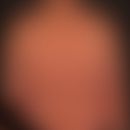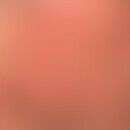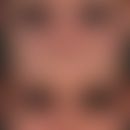Synonym(s)
HistoryThis section has been translated automatically.
DefinitionThis section has been translated automatically.
A foudroyant infectious disease that occurs very rarely in industrialized countries. It often begins as a gingival infection, spreads rapidly and leads to progressive ulceration of the mouth and cheek area. In most cases, the infectious tissue destruction proceeds without a major defensive reaction. This results in large tissue defects of the facial region, which often include the cheek and lip regions, exposing the dental apparatus. Some authors regard the disease as fusospirochetosis.
You might also be interested in
Occurrence/EpidemiologyThis section has been translated automatically.
Worldwide 100.000-300.000 diseases/year. In endemic areas (Sub-Sahara, Sahel) the incidence is 1-12/1,000 inhabitants/year. In the Federal Republic of Germany it occurs practically only sporadically in migrants or as a consequence of other infectious diseases such as typhoid, measles or HIV/AIDS.
EtiopathogenesisThis section has been translated automatically.
Oral mixed infection (acute necrotizing gingivitis), especially colonization of the cavum oris with Fusobacterium necrophorum, F. nucleatum, Prevotella intermedia (> 80% of patients), Actinomyces spp. (40-80% of patients), Bacteroides, Streptococci spp. and Staphylococcus spp. Borrelia vincenti is regularly found in the diseased tissue.
Predisposing factors: malnutrition, immunosuppression (e.g. measles, varicella, HIV infection, CMV infection, herpes simplex), poor oral hygiene, living conditions with close contact to pets.
ManifestationThis section has been translated automatically.
ClinicThis section has been translated automatically.
General therapyThis section has been translated automatically.
External therapyThis section has been translated automatically.
Internal therapyThis section has been translated automatically.
Penicillins are effective in early stages, better antibiosis after antibiogram (mixed infection). Also effective are tetracyclines, cephalosporins or ciprofloxacin. If necessary, glucocorticoids such as prednisolone (e.g. Decortin H) for glucocorticoid substitution.
Operative therapieThis section has been translated automatically.
Progression/forecastThis section has been translated automatically.
In addition to rapid mortality (70-90% of untreated cases), milder courses are also known (Farley E et al. 2019).
Note(s)This section has been translated automatically.
LiteratureThis section has been translated automatically.
- Baratti-Mayer D et al (2003) Noma: an "infectious" disease of unknown aetiology. Lancet Infect Dis 3: 419-43
- Battus C (1595) Handboeck of the Chirurgijen. Abraham Ende, Isaak Canin, Dordrecht, pp. 339-343
- Berthold P (2003) Noma: a forgotten disease. Dent Clin North Am 47: 559-574
- Blumer G, MacFarlane A (1901) An epidemic of noma: report of sixteen cases. On J Med Sci 122: 527
- Boat A (1649) Observationes Medicae de Affectibus Omissis. Thomas Newcomb, London, p.15
- Coates bra (1826) Description of the gangrenous ulcer of the mouths of children. North Am Med Surg J 2: 1
- Erdmann D et al (1998) Reconstruction of severe facial defects due to noma. Surgeon 69: 1257-1262
- Farley E et al (2019) 'I treat it but I don't know what this disease is': a qualitative study on noma (cancrum oris) and traditional healing in northwest Nigeria. Int Health pii: ihz066
- Lund G (1765) Om Sjukdomen NOMA, och Chinchina Barkens nytta emot densamma. Kongl Vetenskaps Acad Handl 26: 36
- Marck KW (2003) Cancrum oris and noma: some etymological and historical remarks. Br J Plast Surgery 56: 524-527
- Naidoo S et al (2004) Oro-facial manifestations in paediatric HIV: a comparative study of institutionalized and hospital outpatients. Oral Dis 10: 13-18
- Rotbart HA et al (1986) Noma in children with severe combined immunodeficiency. J Pediatr 109: 596-600
- Judge AL (1828) The water crayfish of the children. TCF Enslin, Berlin, S. 1-3
- Stingl P (2000) Noma in Africa. The face of poverty. MMW Progress Med 142: 34
- of de Voorde C (1680) Nieuw Lichtende Fakkel der Chirurgie or Hedendaagze Heel-Konst: III Van de Noma, or Rotting Ulceratie. Wilhelmus Goeree, Middelburg, S. 538-541
Incoming links (8)
Angina, plaut-vincenti; Aquatic cancer; Chancrum oris; Cheek burn; Gangrene, infectious of the mouth; Granuloma gangraenescens nasi; Stomatitis gangraenosa; Water crayfish;Outgoing links (10)
Antiseptic; Cytomegalovirus; Glucocorticosteroids; Herpes simplex virus infections; Hiv infection; Measles; Penicillin; Potassium permanganate; Prednisolone; Varicella;Disclaimer
Please ask your physician for a reliable diagnosis. This website is only meant as a reference.




